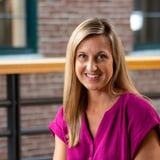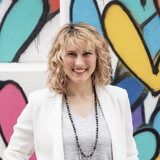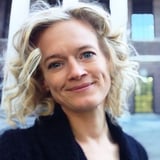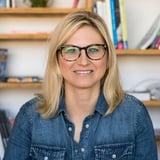Summary
You know that thing where you start a new job and suddenly realize that all those great rules of thumb you thought were almost universally true are either impossible or ineffective in your new organization. Welcome to Leisa’s life. In this talk Leisa will share her experience of completely resetting her idea of best practice, implementing a strategy that is the opposite of what everyone expected, and why so few people do what they think is right. You’ll also get bonus thoughts on how to best set up your research team for maximize effectiveness.
Key Insights
-
•
One dedicated researcher per team, researched every sprint, and including users with access needs proved transformative at GDS.
-
•
Boldly asking for needed resources, even if initially seen as outrageous, can secure more support than self-limiting negotiation.
-
•
Context radically changes what research practices and team structures will succeed; one strategy does not fit all organizations.
-
•
Distributed locations and low local user diversity at DTA required extensive fieldwork and creative ways of sharing insights, like empathy walls and Showcases.
-
•
Embedding researchers in every team is not always possible or beneficial, especially in complex, distributed product organizations like Atlassian.
-
•
Pairing researchers to focus on craft and professional growth helps shift teams beyond comfort zones and improve quality in challenging contexts.
-
•
A strong user-centered mindset, rather than pure product or feature focus, is crucial to understand broader user goals beyond current product usage.
-
•
Building research capability and consistency across multiple agencies demands different leadership and operational approaches than centralized teams.
-
•
Avoid focusing on researcher-to-designer or researcher-to-engineer ratios; success depends on problem focus and depth of involvement rather than numeric formulas.
-
•
Uncertainty and humility are assets; embracing them keeps the door open for learning and adapting strategies to changing contexts.
Notable Quotes
"My kids know everything. If you listen to conversations with them, they say I know, Ma, I know."
"Context is really super important not only for design and research but for how you design organizations and ways of working."
"One researcher per team for at least three days a week was considered an outrageous luxury at GDS in 2013."
"If you make rules, put numbers in them, and say them confidently, sometimes people actually do them."
"When negotiating, bring plan A—show what you need and what good looks like—even if it seems outrageous."
"Ratios always start on the premise of spreading people too thin, which is not a great way to get success."
"At DTA, distributed teams and lack of local diversity meant everyone was out in the field a lot to get diverse input."
"Empathy walls emerged at DTA because teams needed a visceral way to bring stories back from the field."
"At Atlassian, many confident non-researchers were already doing lots of research, which was an opportunity and a challenge."
"Choosing the right hill to die on is so important and so hard; the problems that matter come around again and again."
Or choose a question:
















More Videos

"The user experience will allow us to win."
Doug PowellClosing Keynote: Design at Scale
November 8, 2018

"Make sure children understand they can stop the session at any time, and confirm they really get that."
Mila Kuznetsova Lucy DentonHow Lessons Learned from Our Youngest Users Can Help Us Evolve our Practices
March 9, 2022

"In Toronto it’s now illegal to transmit a Wi-Fi signal in designated public spaces, with penalties for violations—a policy driven by people wanting to unplug from digital life."
Sarah GallimoreInspire Progress with Artifacts from the Future
November 18, 2022

"We never compromise on the business goals, but how we achieve them can be flexible and pragmatic."
Lada Gorlenko Sharbani Dhar Sébastien Malo Rob Mitzel Ivana Ng Michal Anne RogondinoTheme 1: Discussion
January 8, 2024

"The hackathon is a low-commitment way to get people creatively engaged and having fun."
Alnie FigueroaThe Future of Design Operations: Transforming Our Craft
September 10, 2025

"Mixed methods research, combining qualitative and quantitative, gives the fullest understanding of customer experience."
Landon BarnesAre My Research Findings Actually Meaningful?
March 10, 2022

"Every workaround is a mini story of somebody overcoming an obstacle."
Emily EagleCan't Rewind: Radio and Retail
June 3, 2019

"Re-platforming is transformative not just for the product but also for the people, teams, and organization."
Malini RaoLessons Learned from a 4-year Product Re-platforming Journey
June 9, 2021

"I learned to be relentless about prioritization and to hone in on specific details and use cases."
Asia HoePartnering with Product: A Journey from Junior to Senior Design
November 29, 2023
















